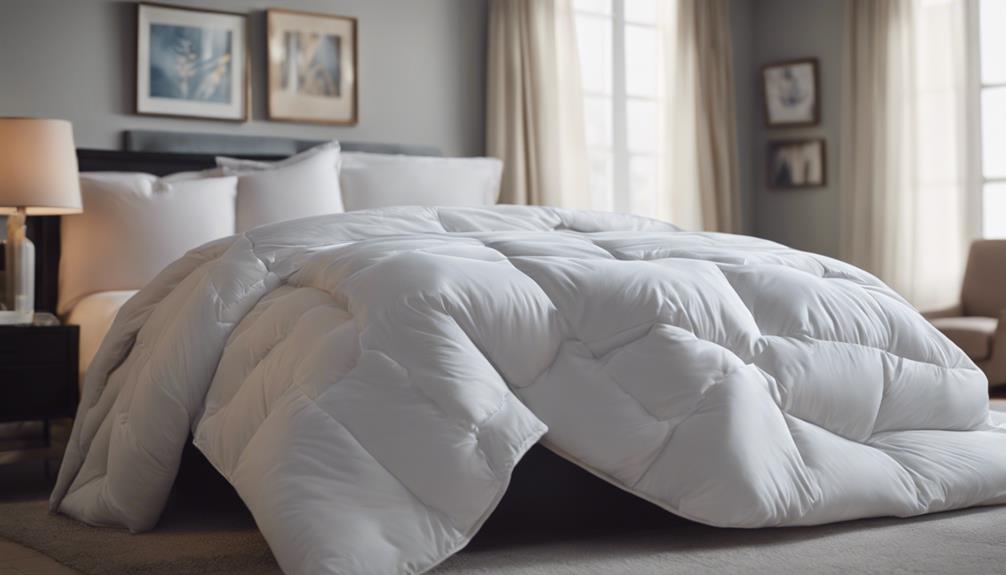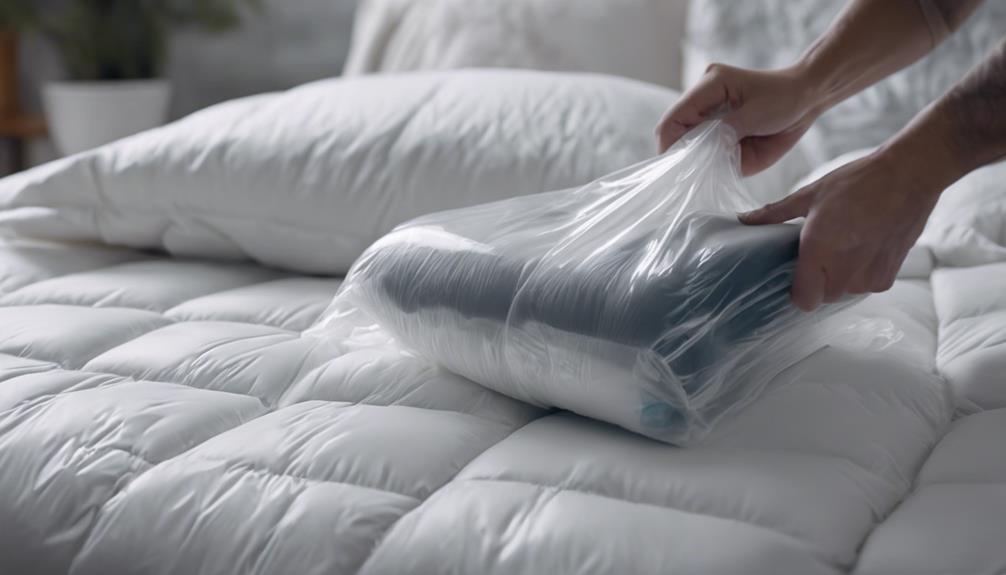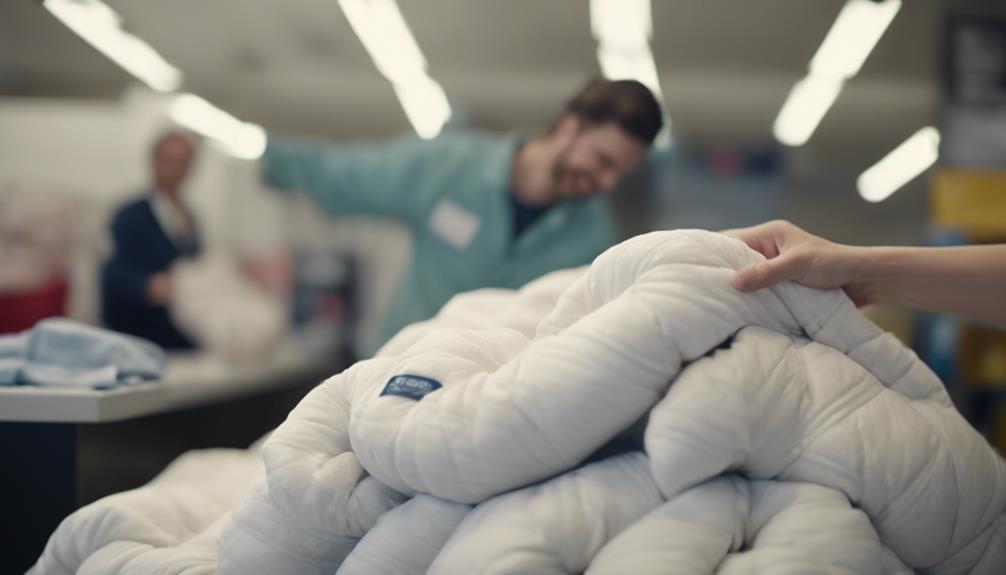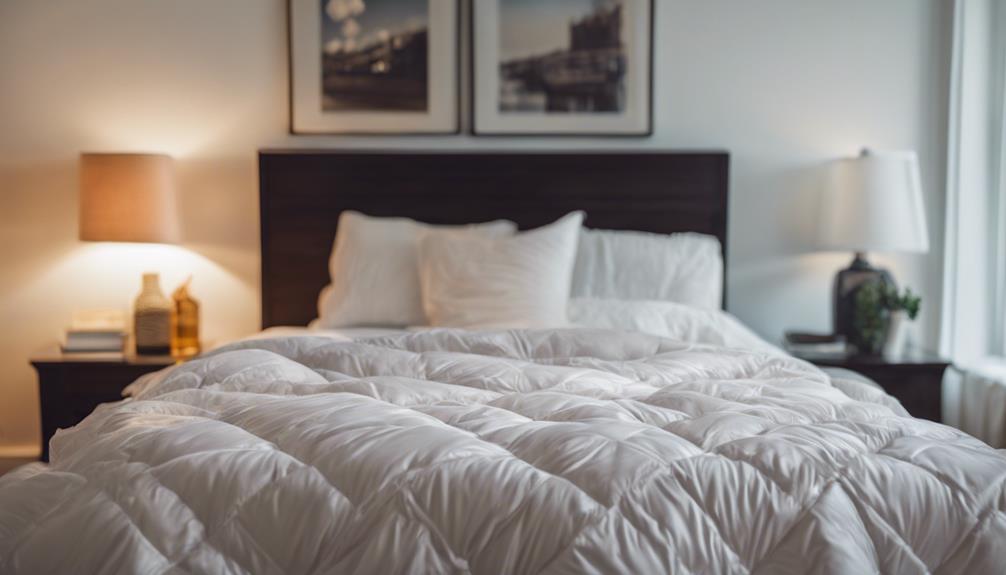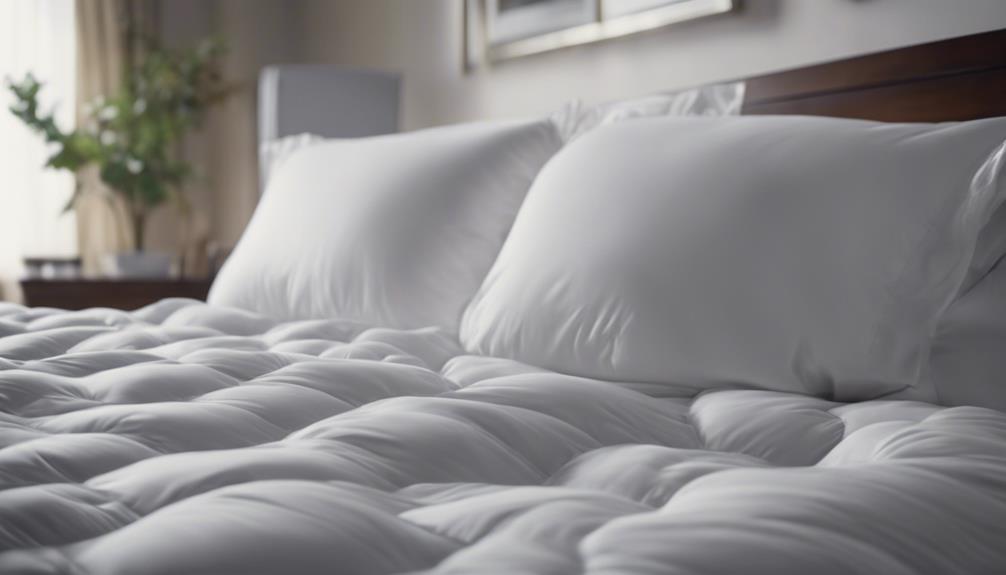Yes, a Queen comforter can be used on a Full bed, however, it may not be an exact fit in size. Queen comforters are designed to be slightly oversized for Full beds, which gives a luxurious appearance with generous draping. This snug fit ensures better coverage and visual impact, resulting in a grand and elegant look. The drooping effect adds a stylish touch and warmth to the bed, improving both visual appeal and coverage. To learn more about achieving the perfect fit and aesthetic appeal when using a Queen comforter on a Full bed, continue exploring the details provided.
Key Takeaways
- Queen comforter slightly oversized for full bed
- Provides luxurious appearance and generous draping
- Enhances bed coverage and visual appeal
- Creates elegant, stylish look with drooping effect
- Consider Full/Queen size for suitable fit
Bed and Comforter Dimensions
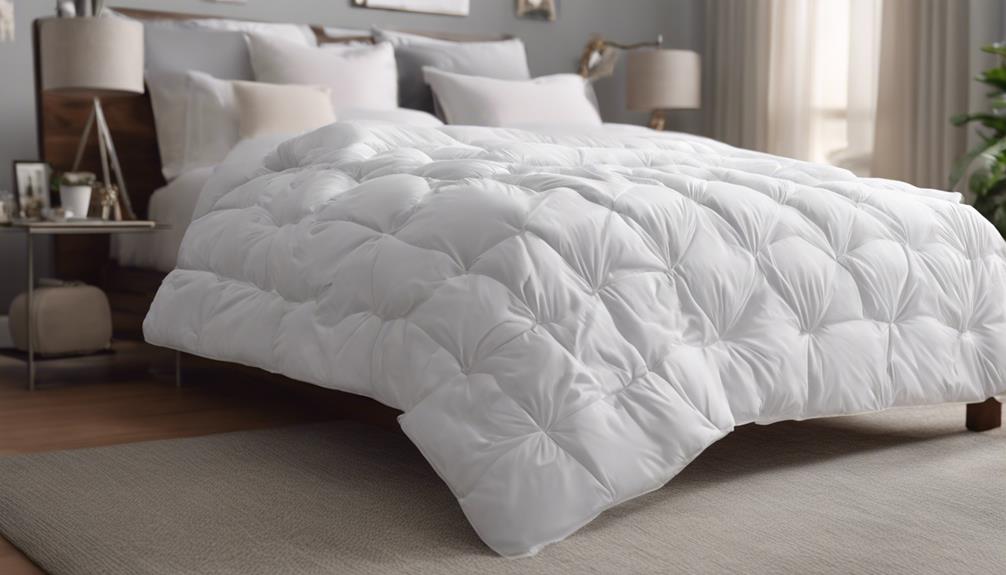
When pondering the compatibility of a queen comforter with a full size bed, the dimensions play a crucial role in determining the appropriate fit. A full size bed measures 54×75, while a queen size bed measures 60×80. This significant difference in size means that a queen comforter, designed for a wider and longer queen size bed, may not fit a full size bed properly. Full size beds are 6 inches narrower and 5 inches shorter than queen size beds, impacting how a queen comforter drapes over the bed.
Using a queen comforter on a full size bed can result in either excess fabric or a lack of coverage, depending on personal style preferences. It's essential to take into account the dimensions of both the bed and the comforter to achieve a suitable fit and aesthetic appeal. By understanding these measurements and how they relate to each other, one can make an informed decision on whether to use a queen comforter on a full size bed for their desired look and comfort level.
Queen Comforter on a Full Bed
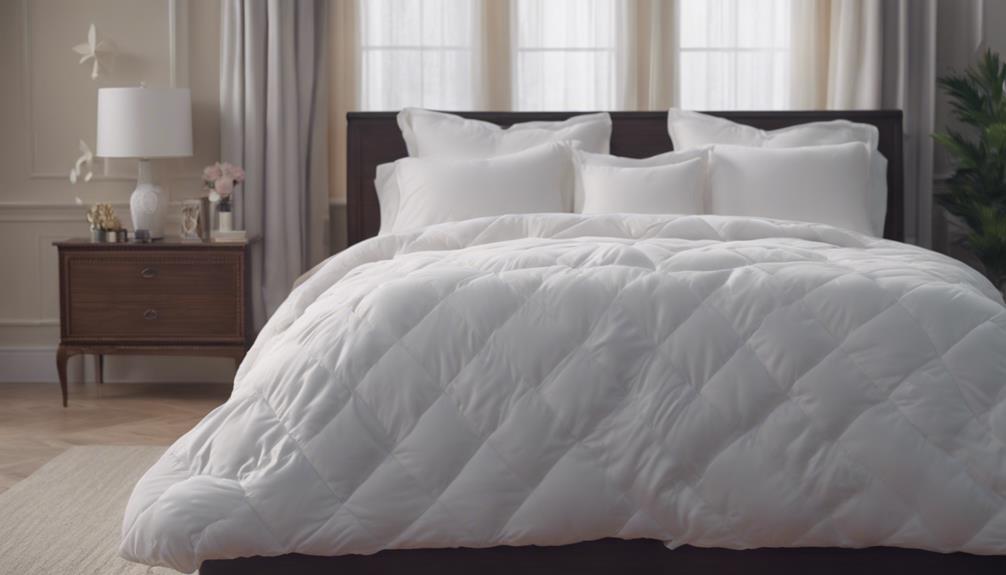
Queen comforters can indeed fit full beds due to their slightly larger size.
The drooping effect of a queen comforter on a full bed can add a touch of luxury to the bedding, enhancing visual appeal and warmth in colder months.
Opting for a queen comforter for a full bed depends on personal preferences and desired aesthetics, offering better coverage and comfort.
Size Compatibility Explanation
To understand how a queen comforter fits a full bed, it's important to consider the dimensions and the visual impact it can offer. A queen size bed typically measures around 60 inches wide by 80 inches long, while a full size bed is approximately 54 inches wide by 75 inches long.
In contrast, queen comforters range from 86 to 88 inches wide and 90 to 100 inches long, making them slightly oversized for a full bed. This extra size allows the comforter to drape more generously, giving a luxurious and cozy appearance.
Despite being larger than the full bed, the queen comforter snugly fits, providing better coverage and enhancing the overall look of the bedding setup.
Bed Appearance Considerations
Enhancing the aesthetics of a full bed, a queen comforter draped over it exudes a luxurious and cozy ambiance. When considering bed appearance, using a queen size comforter on a full or queen size bed brings several benefits:
- The larger size of the queen comforter can create a more grand and elegant look, covering the bed more fully and providing a sense of opulence.
- The drooping effect of the queen comforter on a full bed adds a stylish touch, giving the bed a plush and inviting appearance.
- Opting for a queen size comforter can enhance the visual appeal of the bed, offering better coverage and warmth, while also making the bed look more put together and well-designed.
Size Suitability and Adaptability
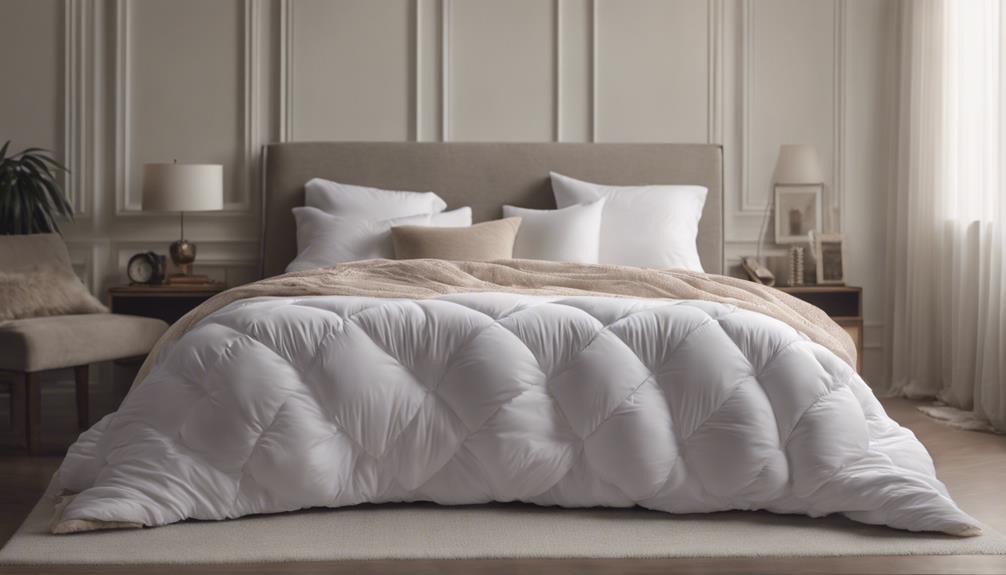
When considering the fit of a queen comforter on a full bed, one may notice the extra fabric and its impact on the overall aesthetics. The adaptability of a queen comforter on a full bed depends on personal preference and desired style. Some individuals appreciate the draped or luxurious look created by the extra fabric, while others may find it less visually appealing. Here is a table highlighting the key points regarding the size suitability and adaptability of a queen comforter on a full bed:
| Key Aspect | Description |
|---|---|
| Fit | Queen comforters can technically fit full beds but may have extra fabric. |
| Aesthetics | The extra fabric can create a luxurious look, adding warmth and style. |
| Personal Preference | Adaptability depends on individual tastes, with some favoring the oversized appearance. |
| Visual Appeal | While some enjoy the excess fabric for its draped effect, others may find it less appealing. |
Visual Impact and Layering Effect
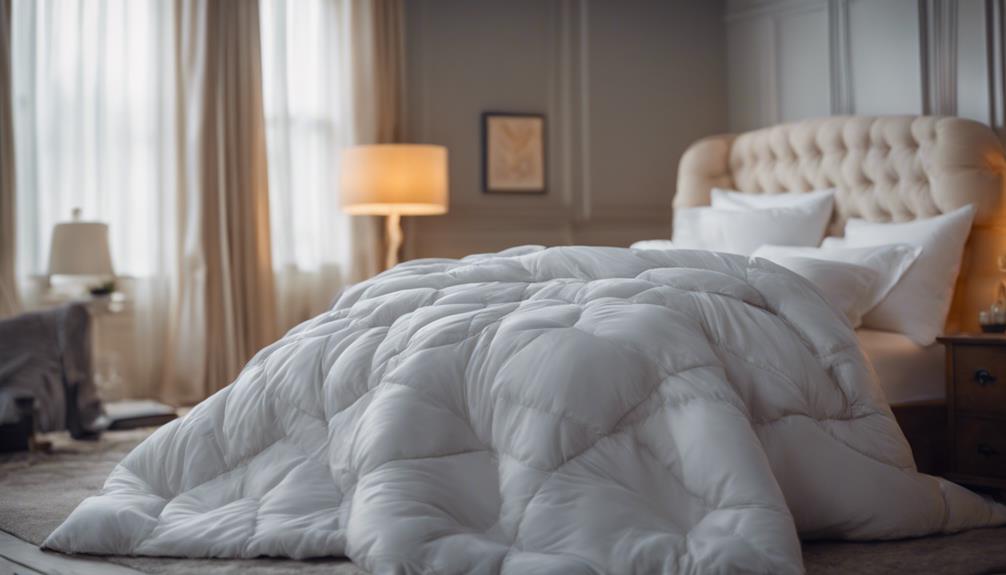
Amplifying the visual appeal and coziness of a full bed, layering a queen comforter can introduce a luxurious touch while providing enhanced warmth and style. Here's how you can achieve a stunning visual impact and a cozy layered effect with a queen comforter on a full bed:
- Elegant Drape: When a queen comforter is placed on a full bed, it may drape elegantly over the sides, creating a luxurious and stylish look that enhances the overall aesthetic of the bedding.
- Enhanced Warmth: Layering a queen comforter on a full bed not only adds to the visual appeal but also provides additional warmth and coziness, making your bed a welcoming retreat.
- Tailored Appearance: The larger size of a queen comforter on a full bed offers better coverage and a more tailored appearance, giving your bed a polished and sophisticated look that exudes comfort and style.
To further elevate the visual impact and layered effect, consider mixing and matching textures and patterns with your queen comforter, and complementing it with decorative pillows or throw blankets for a coordinated and inviting look.
Warmth Advantage of Queen Comforters
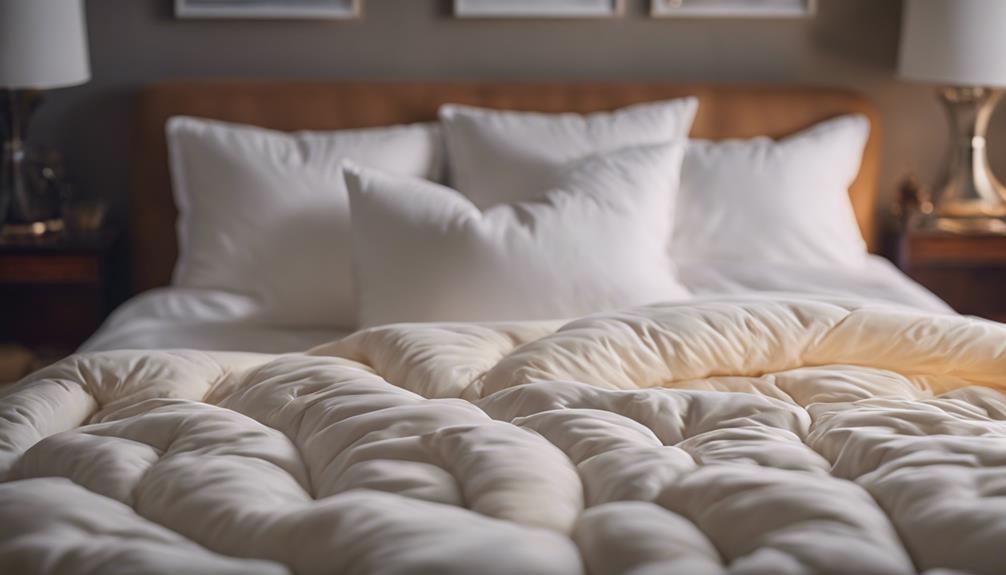
Queen comforters provide superior warmth coverage on a full bed, thanks to their larger size providing enhanced insulation for colder nights. The extra width of a queen comforter can offer enhanced warmth and coziness, making it an excellent choice for full beds, especially during chilly evenings. The generous dimensions of a queen comforter guarantee more coverage and heat retention, creating a luxurious and inviting atmosphere while keeping you warm throughout the night.
| Warmth Advantage of Queen Comforters |
|---|
| Larger size provides enhanced insulation |
| Extra width offers superior warmth coverage |
| Creates a cozy atmosphere on full beds |
Personal Preference Considerations
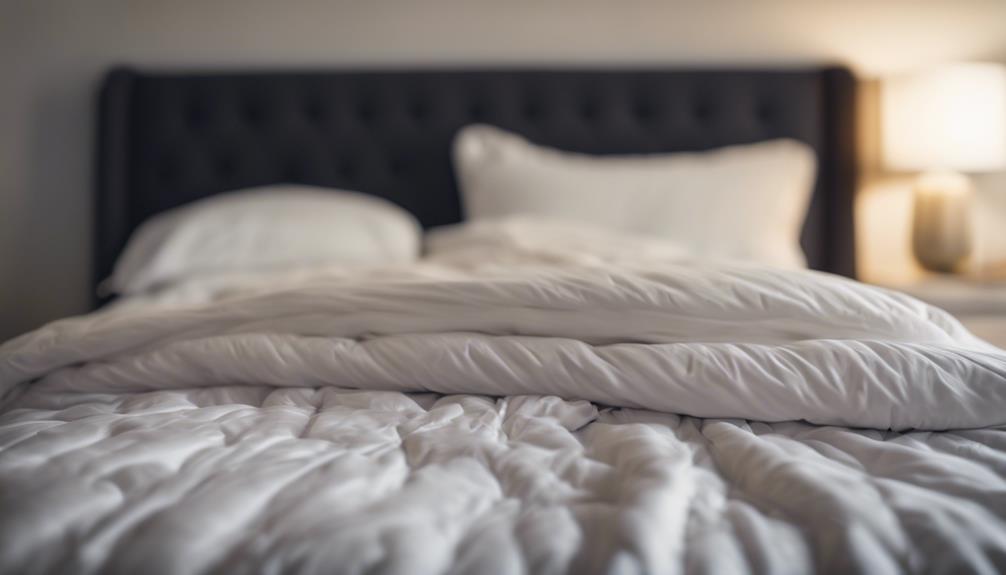
When pondering between a queen comforter and a full bed, it's important to take into account size and space, as well as design and style preferences.
Some may find that the draped look of a queen comforter on a full bed adds a touch of luxury, while others prioritize the added warmth and coverage it provides.
Ultimately, the choice hinges on personal comfort and aesthetic inclinations.
Size and Space
Considering personal preferences is essential when determining the size and space requirements for a full bed with a queen comforter. Here are some key points to keep in mind:
- Coverage: A queen comforter may offer more coverage on a full bed, ensuring a cozy and comfortable feel.
- Draped Look: Some individuals prefer the stylish draped look that a queen comforter provides on a full bed, adding a touch of elegance to the bedroom.
- Luxurious Feel: The extra width of a queen comforter on a full bed can create a more luxurious appearance, enhancing the overall aesthetic of the bedding.
Design and Style
Our choice of comforter design and style greatly impacts the overall aesthetic and feel of our bedding. When selecting a comforter for a full or queen bed, personal preference plays a significant role. Consider the desired aesthetic, such as tailored or draped, when choosing the right comforter. Design elements like patterns, colors, and textures can enhance the overall look of the bedding. Tailored designs offer a neater appearance, while draped styles provide a luxurious feel. Matching the comforter design with the bedroom decor creates a cohesive and visually pleasing environment.
| Sizes | Comforters | Design and Style |
|---|---|---|
| Full | Patterns, colors, textures | Tailored or draped |
| Queen | Matching bedroom decor | Neat or luxurious feel |
Same Size or One Size Larger?
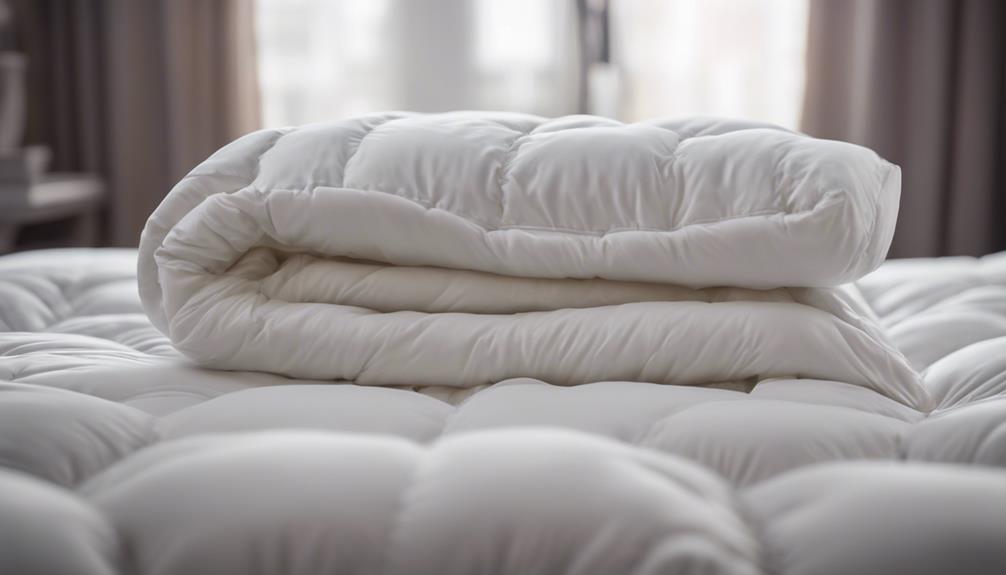
For a perfect fit and enhanced style, choosing a queen comforter over a full size can elevate the overall look of your bedding ensemble. When deciding whether to opt for a queen comforter on a full bed, consider the following:
- Size Difference: A queen comforter is designed to fit a larger mattress than a full bed, which means it will offer more coverage and a better drape when used on a full-sized bed.
- Luxurious Look: By using a queen comforter on a full bed, you can achieve a more luxurious and elegant appearance for your bedding ensemble, enhancing the overall aesthetic of your bedroom.
- Warmth and Style: Not only does a queen comforter provide better coverage on a full bed, but it also adds warmth and style to your bedding, making your sleeping space cozy and visually appealing.
Considering these factors, using a queen comforter on a full bed can be a stylish and practical choice for creating a comfortable and inviting bedroom decor.
Comforter Vs. Duvet Differences
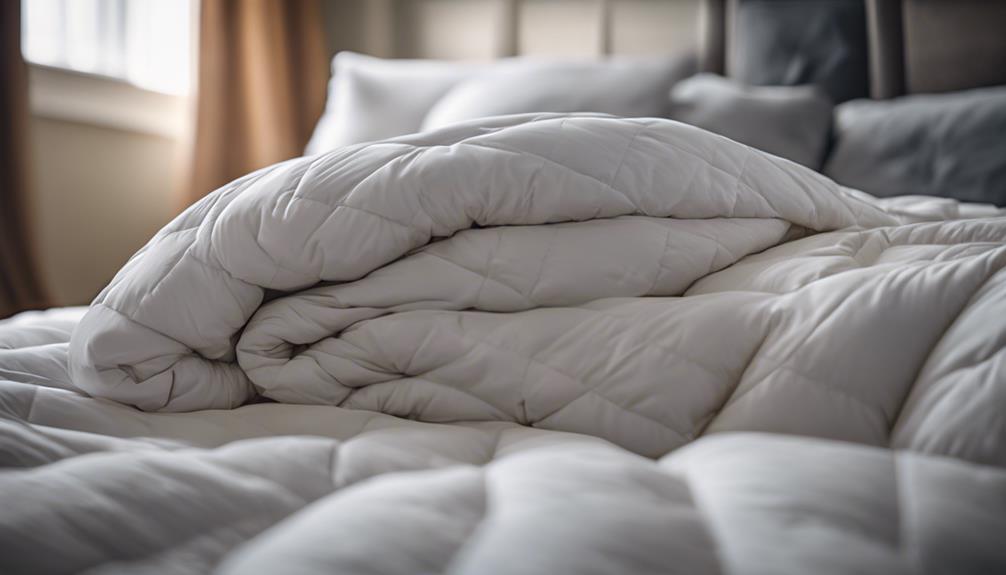
When comparing comforters and duvets, it is crucial to understand the distinct differences in their design and functionality. Comforters are standalone bedding pieces filled with insulating materials like down, cotton, or synthetic fibers, while duvets are inserts that go inside duvet covers and are typically filled with down or synthetic materials for warmth. Comforters usually have decorative designs and are quilted or stitched to keep the filling evenly distributed, whereas duvet covers are like large pillowcases that encase duvets and can be easily removed for washing or changing styles. Comforters are ready-to-use bedding pieces, providing convenience for quick bed making, while duvets require covers and are more versatile for changing decor styles.
| Feature | Comforter | Duvet |
|---|---|---|
| Functionality | Standalone bedding piece | Insert for duvet covers |
| Filling Material | Down, cotton, synthetic fibers | Down, synthetic materials |
| Design | Quilted or stitched with decorative patterns | Plain, as it is covered by a duvet cover |
| Maintenance | Easy to wash and maintain | Duvet cover protects the insert, easy to change for different looks |
Choosing the Right Duvet Size
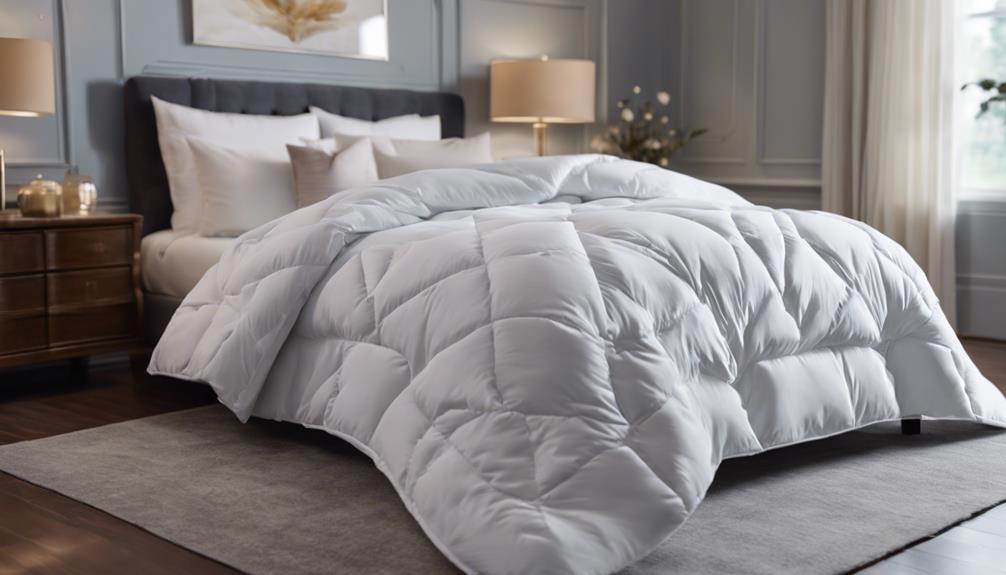
Choosing the right duvet size for a full bed is crucial to guarantee maximum comfort and style. When selecting a duvet for a Full bed, keep in mind the dimensions of the bed, typically 54 inches wide and 75 inches long. Here are some key points to take into account:
- Matching Bed Size: Guarantee the duvet size matches the dimensions of a Full bed to achieve a snug fit that covers the mattress adequately. This prevents any exposed areas and maintains a neat appearance.
- Full/Queen Size: Opting for a Full/Queen size duvet can provide a bit of extra coverage for added comfort without overwhelming the bed. This size offers versatility and a slightly larger fit for a Full bed.
- Enhanced Comfort: Choosing a duvet slightly larger than the bed size can enhance comfort by providing more fabric to snuggle into, promoting better warmth retention, and creating a luxurious aesthetic on a Full bed.
Frequently Asked Questions
Can I Get a Queen Size Comforter for a Full Size Bed?
Yes, you can definitely get a queen size comforter for a full size bed. Queen comforters can fit full beds due to their larger dimensions. The drooping effect can add a touch of luxury while providing better coverage and warmth.
Many choose queen comforters for full beds for enhanced aesthetics. Ultimately, opting for a queen comforter on a full bed depends on personal preferences and desired look.
What Size Comforter Should I Get for a Full Bed?
When selecting a comforter for a full bed, opt for a full or queen size for ample coverage. A queen comforter, wider than a full bed, can provide a generous drape. This additional width can enhance the aesthetic appeal and warmth during colder months.
Consider the desired look and coverage to make the best choice. Remember, a queen comforter can fit a full bed, offering a luxurious feel.
Do Queen and Full Fit the Same?
Yes, queen and full beds have different dimensions. Queen beds are wider at 60 inches compared to full beds at 54 inches. Due to this size variation, queen comforters made for queen beds may be slightly oversized for full beds.
While not a perfect fit, using a queen comforter on a full bed can still provide warmth and style. This is due to the draped and luxurious look created by the excess fabric.
Can You Put Queen Bedding on a Full?
Yes, you can use queen bedding on a full bed with some adjustments. The excess width of a queen comforter on a full bed may need to be tucked or folded. Consider using a bed skirt to hide any extra fabric for a neat look.
Some prefer the draped appearance of a queen comforter on a full bed for added elegance. While not a perfect fit due to size differences, queen bedding can still work on a full bed.
Can a Twin XL Comforter be Used on a Full-sized Bed?
Yes, a Twin XL comforter for a full-sized bed could work, but it may not provide full coverage. The dimensions of a Twin XL comforter are 68″ x 90″, while a full-sized bed is typically 54″ x 75″. This means it may be too narrow and short to fully cover the bed.
Conclusion
To sum up, a queen comforter can fit a full bed, but it may hang over the edges more than desired. Consider the size suitability, visual impact, and warmth advantage before making a decision.
Personal preference plays a key role in choosing the right size. Whether you opt for the same size or one size larger, make sure it meets your comfort needs.
Remember, comforter vs. duvet differences can also impact your decision. Choose wisely for a cozy night's sleep!
